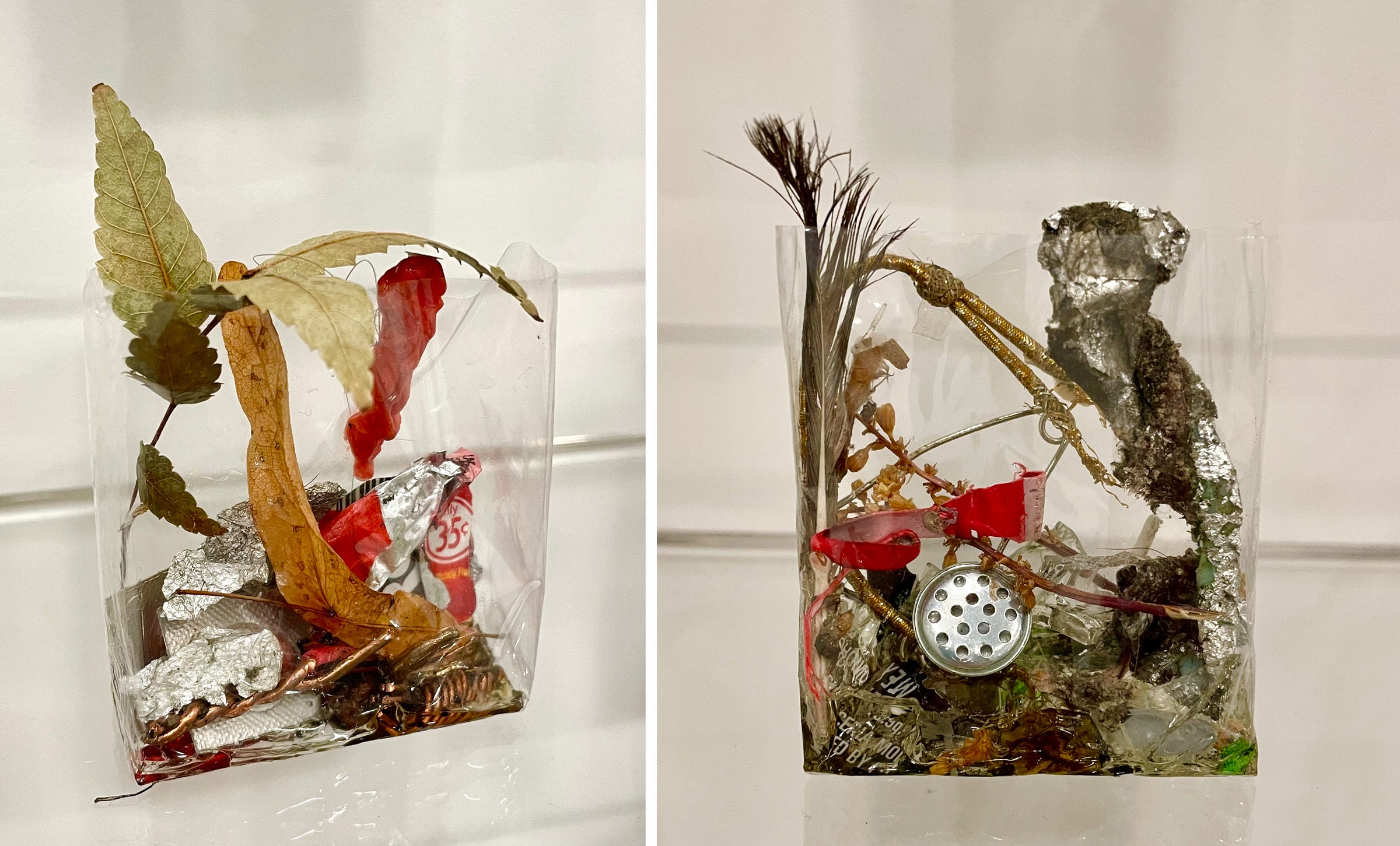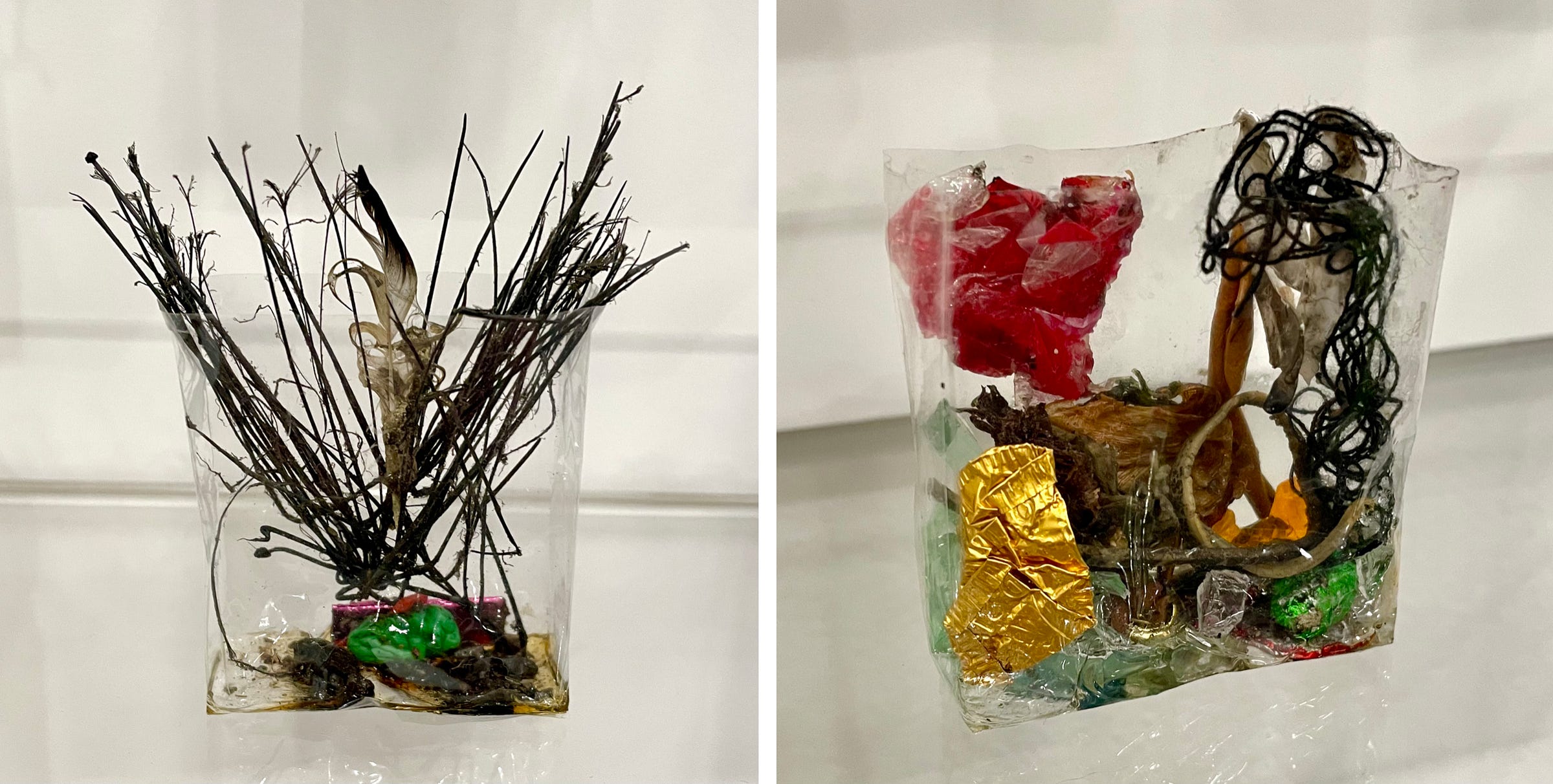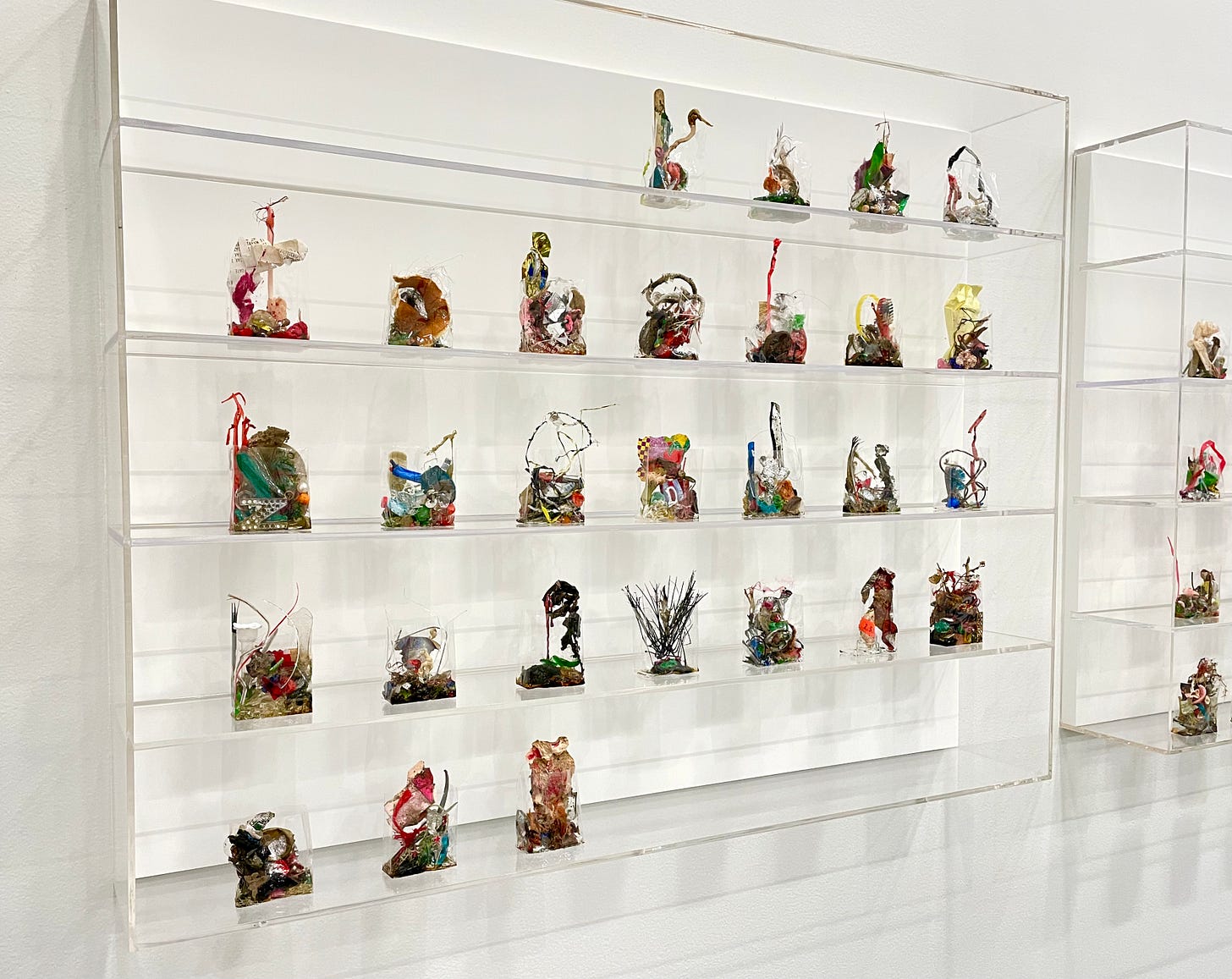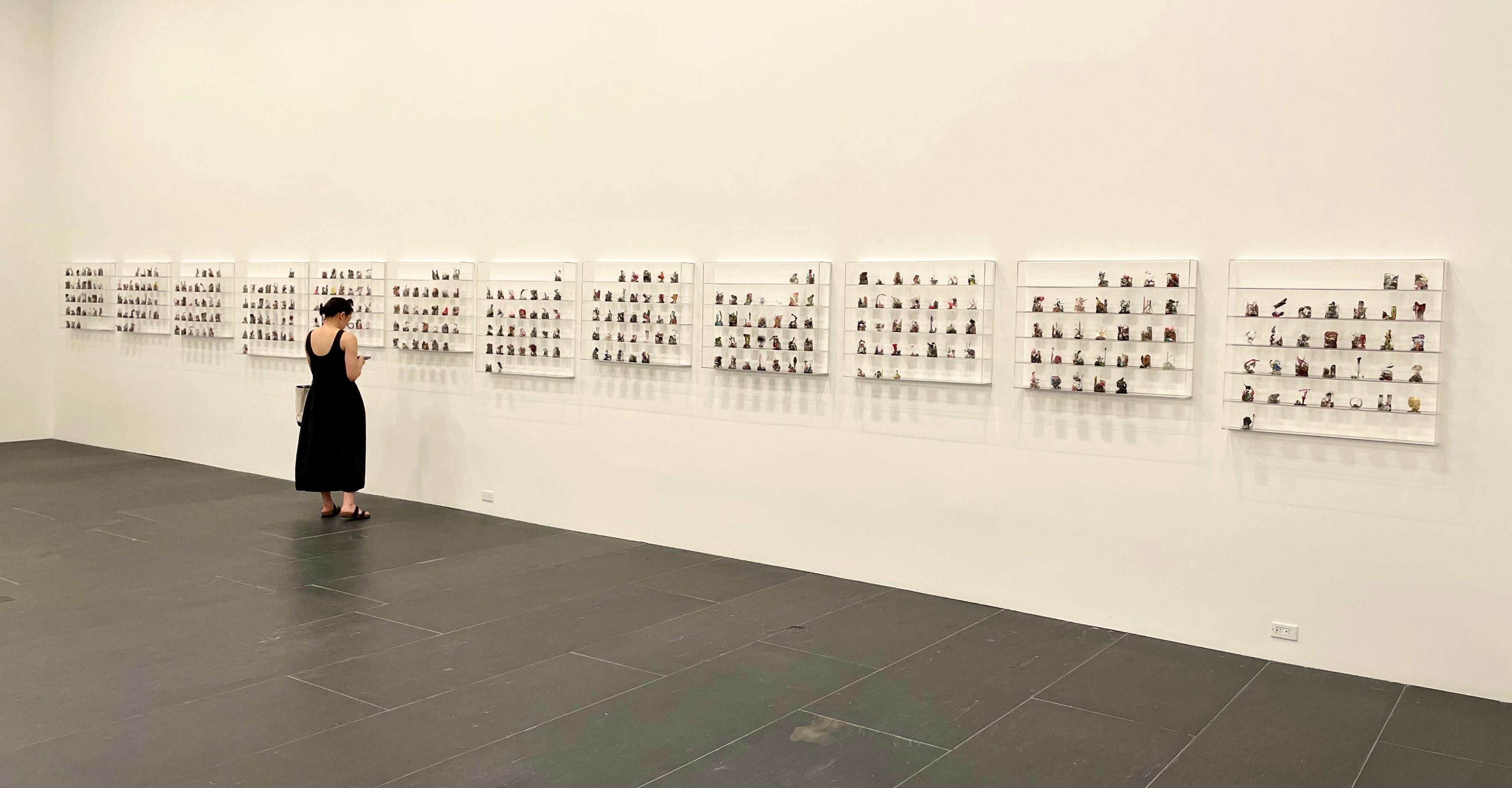One Man’s Trash Is Another Man’s Completely Brilliant Art Project
A good eye for detail and a very clever format yield super-interesting results. Plus a new Inconspicuous News Roundup!
Note: This post includes photos of very small details and also features two videos, so I strongly recommend that you read the web version, not the email version, preferably on a computer instead of a phone. — Paul
Back in June I wrote about an exhibit of really fun miniature-themed diorama scenes constructed out of everyday objects by the Japanese artist Tatsuya Tanaka. A few days ago I checked out the work of another Japanese artist who who specializes in miniatures comprised of everyday items — but with a radically different creative approach.
The artist is Yuji Agematsu. He lives in Brooklyn and has a very specific artistic method: Each day he goes outside and collects some detritus that he finds on the ground — leaves, dead bugs, discarded candy wrappers, hair, coins, bottle caps, pieces of orange peel, shards of glass or plastic, scraps of paper, whatever. Then he takes the day’s haul to his studio, fashions the items into a tiny abstract sculpture that he seals with a drop or two of resin, and puts the sculpture in the cellophane wrapper from a cigarette pack. Each one becomes an ethereal little world unto itself:
But here’s the beauty part: Because each sculpture represents one day’s worth of collected flotsam and jetsam, Agematsu arranges and displays them in a calendar-themed format. Here, for example, is February 2023 (a month that started on a Wednesday):
I took these photos on Saturday at a gallery in Harlem, where Agematsu’s entire year of 2023 is currently on display. It’s a very minimalist presentation — there’s no signage, no background information, not even Agematsu’s name. Just a big, white room with 365 tiny sculptures displayed in 12 calendar-based arrangements:
I like a lot of things about Agematsu’s sculptures. But I have to admit, it’s the calendar-based concept that really gets me — it’s brilliantly programmatic. It turns the art into an art project (I’m a big fan of projects), and it adds an element of structure that nicely counterbalances the sculptures’ freewheeling abstractions.
That said, the sculptures are pretty nifty on their own terms. I particularly love how so many of them manage to have lots of empty space even though they’re so small. It’s impossible to pick a favorite, but here’s one that I lingered over for a bit:






